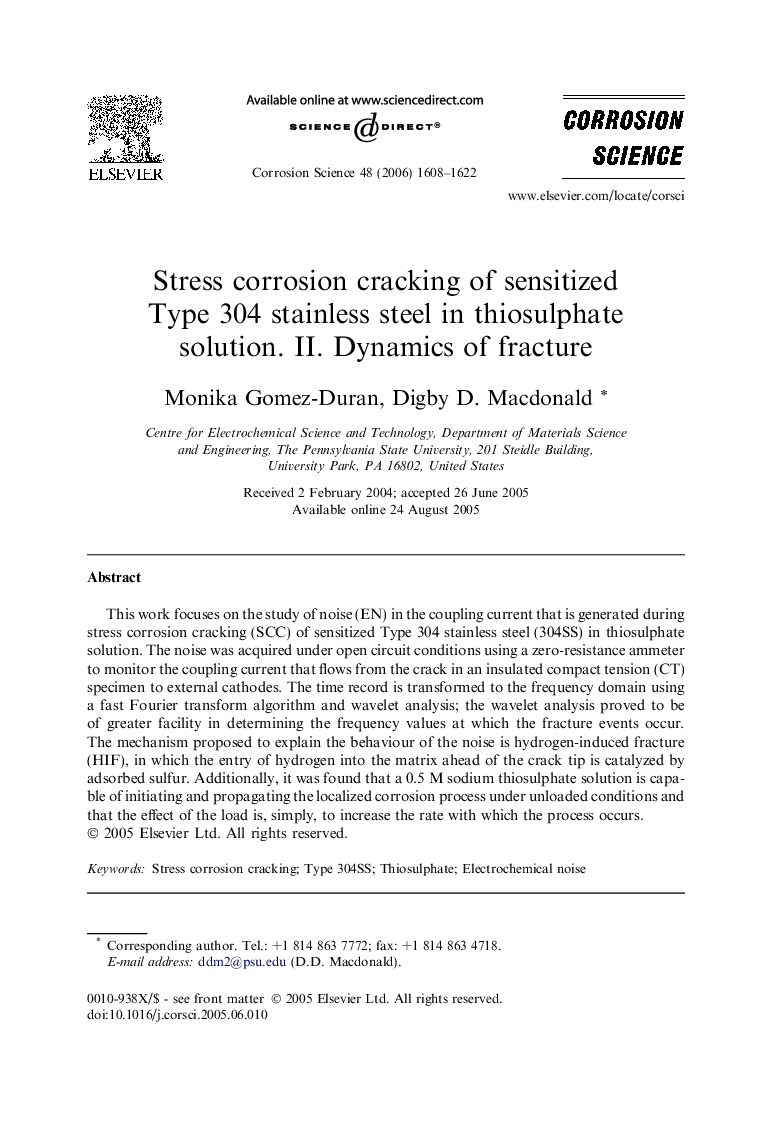| Article ID | Journal | Published Year | Pages | File Type |
|---|---|---|---|---|
| 1472369 | Corrosion Science | 2006 | 15 Pages |
This work focuses on the study of noise (EN) in the coupling current that is generated during stress corrosion cracking (SCC) of sensitized Type 304 stainless steel (304SS) in thiosulphate solution. The noise was acquired under open circuit conditions using a zero-resistance ammeter to monitor the coupling current that flows from the crack in an insulated compact tension (CT) specimen to external cathodes. The time record is transformed to the frequency domain using a fast Fourier transform algorithm and wavelet analysis; the wavelet analysis proved to be of greater facility in determining the frequency values at which the fracture events occur. The mechanism proposed to explain the behaviour of the noise is hydrogen-induced fracture (HIF), in which the entry of hydrogen into the matrix ahead of the crack tip is catalyzed by adsorbed sulfur. Additionally, it was found that a 0.5 M sodium thiosulphate solution is capable of initiating and propagating the localized corrosion process under unloaded conditions and that the effect of the load is, simply, to increase the rate with which the process occurs.
